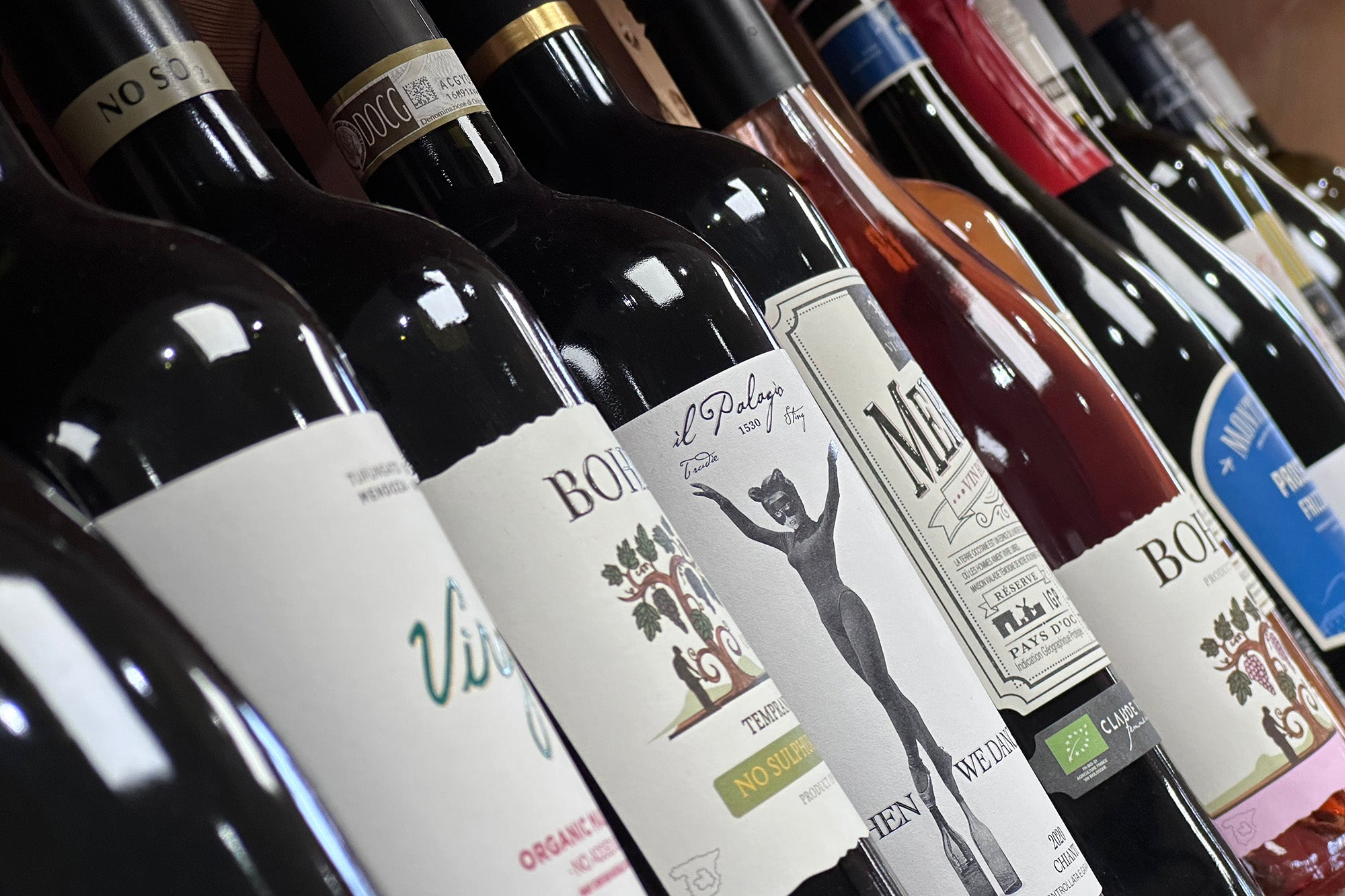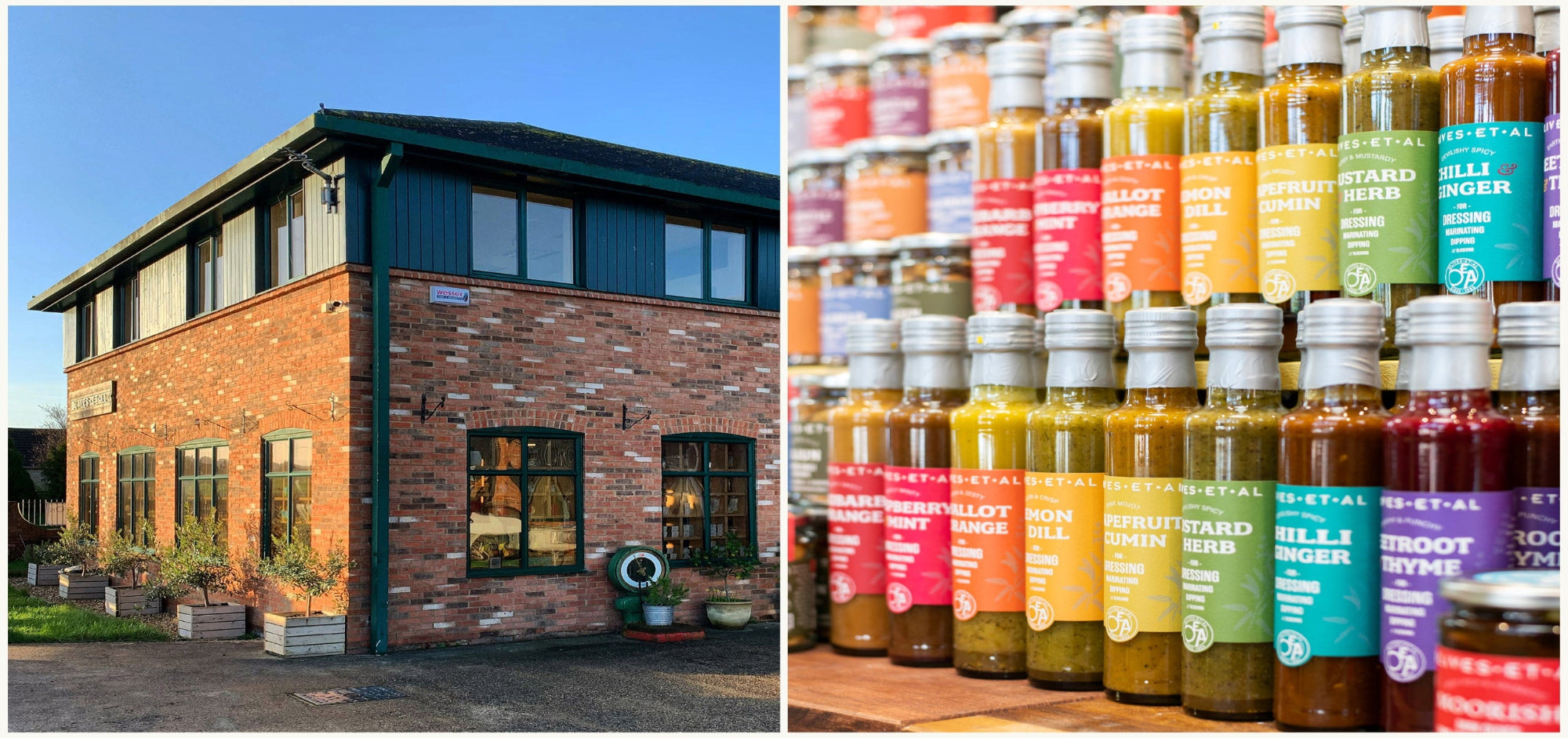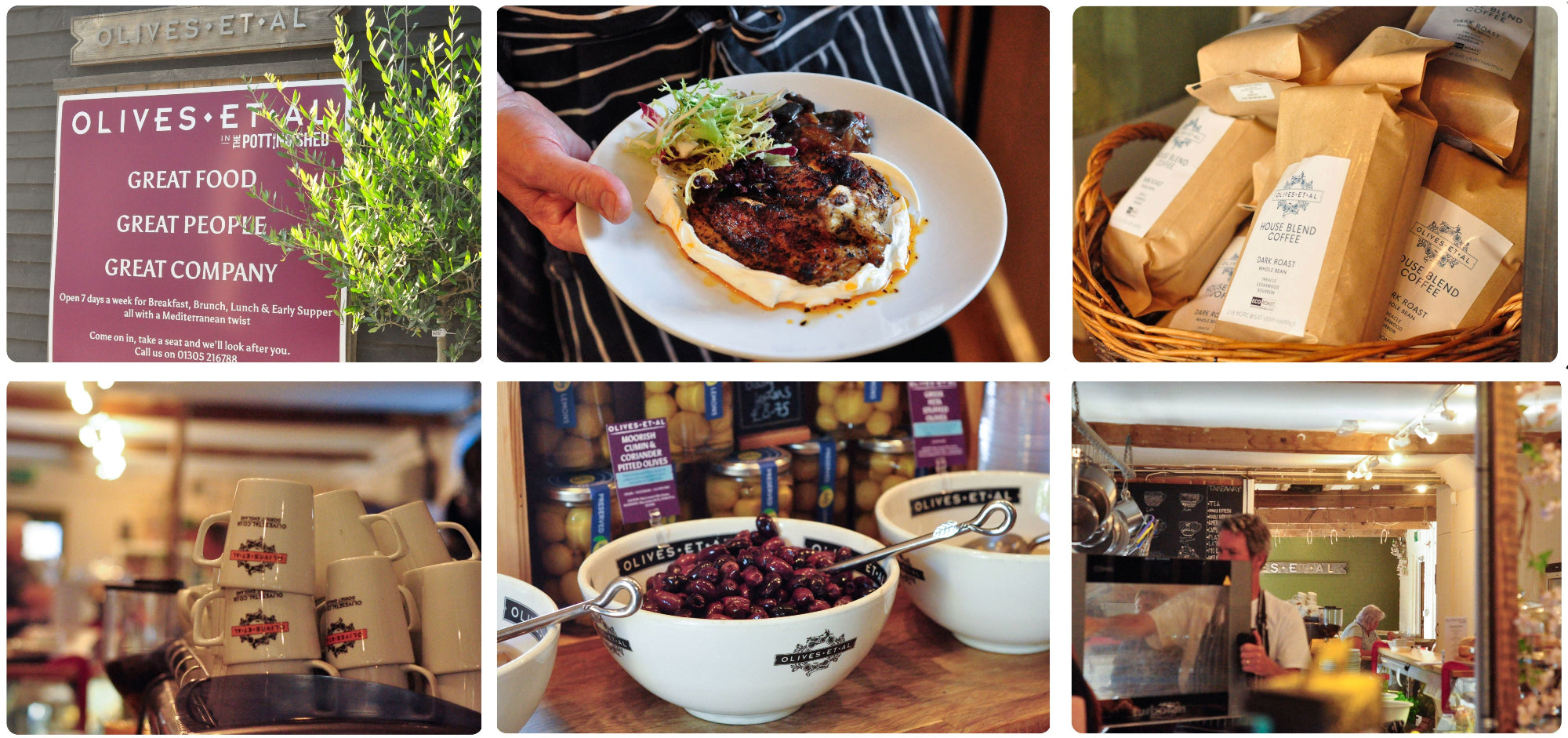The Original
British Olive Artisans
and so much more...
With more than 30 years under his belt as an Oliveer (that's what we call ourselves), it's fair to say that Giles, our co-founder knows more than most about olives. He'd be at pains to say he was an expert although we'd say he was. You make up your own mind....

The Old Tree Story
Sometime ago I found myself back in Jordan and on the site of a magnificent Ottoman Fortress at Ajloun in the north of the country. The fortress is remarkably well preserved and it attracts tourists and archaeologists from all over the world. It was built on the orders of Saladin between 1184 and 1185 on top of a hill known as Jebel Auf. That means the castle is now almost 830 years old. It has seen its fair share of the sands of time marching past along with many battles, wars, romances; lives and deaths and all the rest of the stuff that happens across 800 years.
Most of the visitors to Ajloun and the magnificent fortress will not notice the landscape around and the slopes leading up to the battlements. If ever you’re there, look south and you’ll see olive groves. The nearest one of which is currently in the stewardship of a wonderful man called Ratib Rateh. He has looked after the trees for 60 years or so and is preparing his son to take them on for the next generation. His trees are more than 2500 years old. They are 3 times as old as the fortress that everyone comes to see. When Saladin was born the trees were already more than 1600 years old. Those trees have faithfully delivered their harvest year in year out for two and half millenium; whole empires and civilisations have come and gone since the first tree sprouted. No doubt during that time and given the region it has been on one side or another of numerous arbitary lines drawn on a map and changed hands and religions many times. The tree still does its stuff and still is. For me, that puts the politics, religion and logic of the whole landscape into some sort of perspective.

The Olive Tree
The cultivated olive is an evergreen; usually around 15ft (5m) tall, but it can grow to 30ft (10m). The trunk is covered with a grey sinuous bark, it tends to be twisted and gnarled and often becomes hollow with the passing of time. The wood is very distinctive, characterised by an irregular grain and is used to make kitchen and decorative items, such as chopping boards and bowls.
The Olive Tree’s leaves are long and narrow with an ashy grey-green top and soft, silky white underneath. Its flowers are whitish and form in small clusters. The fruit, which does not all ripen at the same time, ranges from around 1.5 to 3.5 cm and is green to begin with but changes colour as it ripens, turning pink, then violet and finally darkening to a rich deep glossy black.

Growing Olive Trees
Olive trees thrive in Mediterranean conditions. They require very warm average temperatures, and cannot tolerate cold below -12°C (10°F) but are hardy to drought and can withstand high winds. The trees can live for many hundreds – or thousands - of years and can rejuvenate themselves even after being burned or cut down.
Pruning an olive tree correctly is considered an art form, passed down from generation to generation. Understanding which branches are likely to bear fruit, when there are too many branches, or too many flowers - and the tree’s becoming overcrowded (in order for the olives to ripen, they need to be in the sun) therefore needing to be pruned back…(pruning a young tree can result in having no harvest at all) - it’s a tricky business. If you’re thinking of getting a grove of your own, we’d highly recommend studying the trees as to how they’ve been looked after – it’ll be one of the biggest factors in the success of your harvest - and then we’d recommend finding someone with all that generational experience to help you!

Climate
Olives are grown in areas with hot, dry summers and cold, harsh, but dryish winters; it’s a tree that likes extremes. Commonly, for us here in Europe, the major areas for olive growing are around the Mediterranean basin; Spain, Greece, Italy, France, Turkey and North African countries, such as Morocco and Tunisia. These countries hold the tradition and myths of the olives, but as demand for olives and olive oil increases, there are newer entrants too, such as; America, Australia, New Zealand, Chile, Argentina and South Africa.
Now olives are grown in so many countries harvests can occur throughout the year, but, within Europe, the traditional olive calendar looks much like this:
January and February: The olive trees are severely pruned, traditionally by hand but with the advancement in technology, and the sheer numbers of trees, more and more groves are pruning by machine
March and April: The tree wakes up, sprouts a few leaves, the sun shines and the blossom sets on the trees
May: The blossom sets and the drupes start to form
June, July, August and September: The fruit grows
October, November and December: Depending on the olive variety and the area and the weather, green olives are harvested in September and October for the table. Olives for oil are picked around early to mid-November, when the olive have just turned green to purple and they’re at their fullest with oil. November and December is normally the dark olive harvest – for olives such as Kalamata
After all the harvesting, comes the processing and the waiting…

Processing Olives
After olives have been harvested, they’re generally treated a little differently depending what they’re going to be used for. Table olives are either processed immediately, or they’re held in tanks for processing at a later date. Our Kalamata olives, for example, sit ‘curing’ in water and salt for a long time until they’re ready. They’re edible, to some extent, from February, but only the hardened bitter loving Mediterranean’s like to eat them then! They are so bitter at that point in fact, that the flavour’s akin to sucking on an old copper penny - and is probably cheaper and more rewarding. For us we try and hold off from using the Kalamata olives until July or August as the bitterness drains away and the taste mellows to a dark chocolate or chicory flavour. Years ago, we use to work a year in hand, but as we’ve grown, so has world demand, so this is not achievable these days.
Green olives are far quicker to cure than black. Normally released onto the market at the end of January, beginning of February the green olives are almost fluorescent in colour (no dye, just natural fresh colour) and have a gorgeous nuttiness to them. (Imagine cooking butter in a pan with fresh cob nuts and a hint of avocado in the background… lovely!) Green olives will mellow throughout the year though, and by December can look tired, dull in colour and a little spongy, having soaked up some of the brine. The skin of the green olive is quite porous compared to the Kalamata, which stays quite firm for 24 months.

Olive Oil
Olives for oil, however, are used immediately. As soon as the olives are picked, the oil is processed and then stored in huge, very shiny, stainless steel tanks. This is because of quality – just like fruit, or peas, as soon as the olive leaves the tree it starts to deteriorate. Nitrogen is added to the tanks which expels all the oxygen, and then the guys can take a rest, as once in the shiny tanks and without oxygen, the oil stabilises and can be held like this until it’s ready to be bottled. Although you can taste and sometimes buy Extra Virgin Olive Oil in December (in France it is called Huile de Noelle, oil of Christmas) it is so strong and so full on, it is almost inedible. It needs to rest and mellow for a good month and normally the first harvest oils are released at the beginning of February. These are still very pungent and strong and can be quite bitter. A new season oil can be tasted right up until about May, then it settles into the complex flavours that characterise an Extra Virgin Olive Oil.

Location
Olives are found all around the Mediterranean and anywhere with great hot summers and icy chilly winters. A large part of our olive supply comes from Greece; Kalamata and Amphissa olives, purely because we love the taste and trust our suppliers implicitly. The taste of our olives comes from the climate, the terroire and how they are handled when the tree has done its job. We only work with the best artisan olive suppliers, who know their groves and the ancient processes inside out.
Kalamata: The olive variety is the Kalamata, but the area of the Peloponnese is also called Kalamata. It’s a little like making Cheddar cheese in the Cheddar valley. The olives are picked from the tree, not by the classic Italian butter spread advert, of 90 year olds up a ladder blowing kisses at each other, but by either combing the tree or shaking the tree mechanically with the ripe olives falling off into nets. These nets are then gathered, put on the tractor and, once the lorry is full, sent off to the processor. We use a company that specialises almost entirely on Kalamata so he knows what he is doing, and it’s a really easy process.
When the olives arrive with the processor, they’re sorted into three sizes, small medium and large. Then they’re put into 7 or 14 tonne tanks where water is added and the olives are washed. Following that, the water is changed and salt is added, and then the olives are left. The biggest ingredient to cure a Kalamata olive the natural way is TIME. A few salt and water changes and about 6 months’ worth of time and you have the king of olives.

Green olives are slightly different. They go through the same harvesting process but during the curing process a chemical called Lye is added. This reacts with the bitterness in the olives which is then drawn from the olive into the water. The olive is then thoroughly washed and the olive is ready to eat. We have used water and salt cured green olives before, exactly like the Kalamata, but the olive still retains far too much bitterness for the normal European pallet, even with time. However, it’s important to remember that there are varying degrees of this process; the large mass produced olives use tonnes of the stuff which means the olives can be processed and cured in hours. Our suppliers use a very little amount over a much longer period, the soft and gentle approach, which is how our olives taste so much better.
When the olives have finished the curing process, we bring them back to our Oliveers in Dorset. We don't do much to them at that point because there really is no need to. They go through another careful washing process, and then we marinade them in our special recipes of herbs, spices and Extra Virgin Olive Oil, before we package them up into jars or tubs. We’d never pasteurise them in big shiny stainless steel machines or dream of adding chemicals. All we add is a little love. (Some of The Oliveers have been seen talking with the olive barrels, but that's it. Very boring really).
Olives that are mass produced and completely black probably means they’ve been dyed – this doesn’t give a good flavour and most of the real olive flavour will be long gone. We’ve converted many an olive ‘hater’ by getting them to experience one of our real olives.
Olives don’t need to be pasteurised, so keep a look out for unpasteurised ones, these will have a fresher flavour, better texture and will keep their colour.

Olive Varieties
There are so many varieties of olives from so many countries that we couldn’t possibly list them all. But there are a few notable mentions, obviously in our op
KALAMATA
Probably the King of olives. From the Peloponnese region of Greece, this olive is fully ripened on the tree turning 50 shades of purple. Find one that is traditionally cured in water and salt and fully matured, like ours. They can be a tad bitter for the first six months after harvest, but afterwards they are so addictive with their full, rich flavour that they should come with a warning. Think earthy, deep flavour, red wine tannin, simply superb.
HALKIDIKI
One of the most popular olives from Northern Greece and normally green. Good sizing and flavour makes this olive exceptionally versatile, from simply marinated with lemon and oil or hand stuffed with many different fillings. Halkidiki olives are excellent to cook with and add a tart, salty background note to traditional Greek chicken dishes; superb with Hospitality Chicken!
BELLA DI CERIGNOLA
Commonly found around the area of Bari above the ankle of Italy. These olives grow to very large sizes and, unlike any other olive, ripen from the inside out, so should always be firm and crisp. A unique flavour which we always say has a ‘parmesan-ish’ note. Traditionally served green. Some people have now started to dye Bella di Cerignola bright green, but we say leave them alone and just enjoy the natural olive simply with a few herbs, oil and a glass of chilled Pinot.

NOCELLARA DEL BELICE
Now these are green! Bright green - but perfectly natural. These hugely popular olives, from the west of Sicily on the banks of the Belice river, have a gorgeous sweetness and subtly to them. Great as an intro olive and children love them too.
TANCHE OR NYON OLIVE
Grown in the South of France around Nice, these small black olives are dry cured in salt. Layers of olives, then salt, then more olives and then they’re left to stand. The salt pulls the moisture and bitterness from the olives to leave an intensely flavoured wrinkled olive. Very powerful, use a chilled pastisse to calm…
MANZANILLA
These olives are usually found massed produced and dyed black, like the ‘olives’ found on top of pizzas and otherwise known as the ones that give olives a bad name. However, if you’re lucky to find a farmer doing these Spanish olives naturally, you’ll find the delicate flavours come through. with a really nice acidity and freshness.
EXPERT TOP TIP
Green olives are not as ripe as darker olives so if you like more acidity and fresher flavours then try more green olives. Likewise, darker olives are fully ripened so give a much richer, deep and full-bodied flavour.
There are bucket loads of different varieties - same as wine. Try as many Olive varieties - not just marinades, to find your perfect olive. They do taste different. Just keep tasting, tasting and tasting some more until you have found your perfect type of olive!
Olives Et Al has spent 30 years developing an extraordinary range of award-winning products from Kiln Roasted Nuts & Snacks to unique Dressings, Sauces and Condiments plus, of course, our incredible Olives.
Authentic food from wherever the Olive tree grows...


